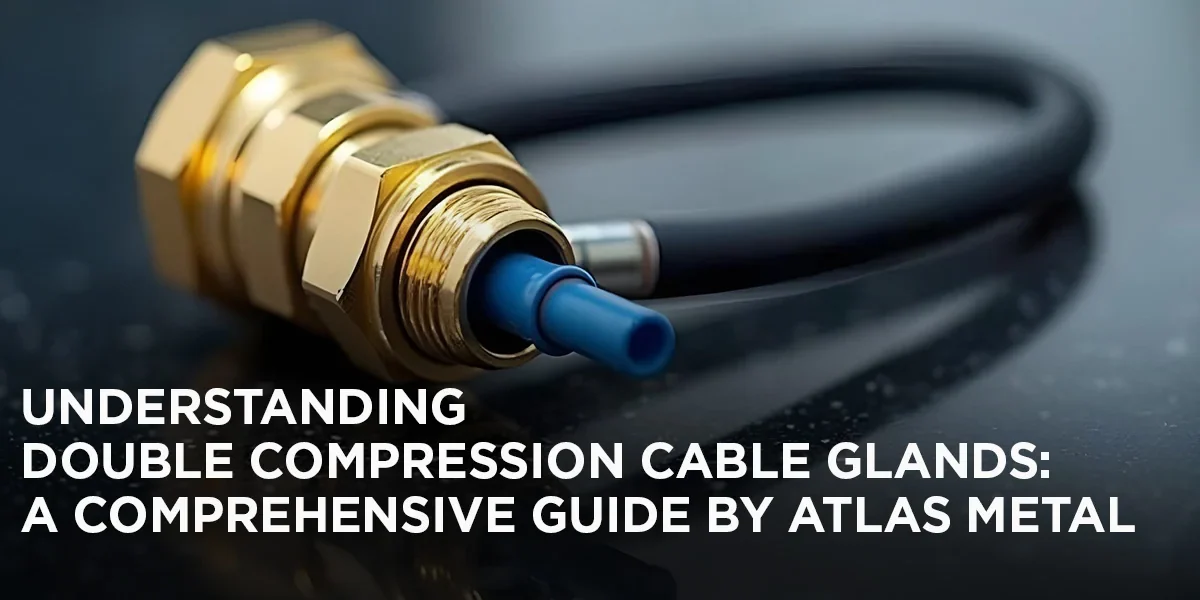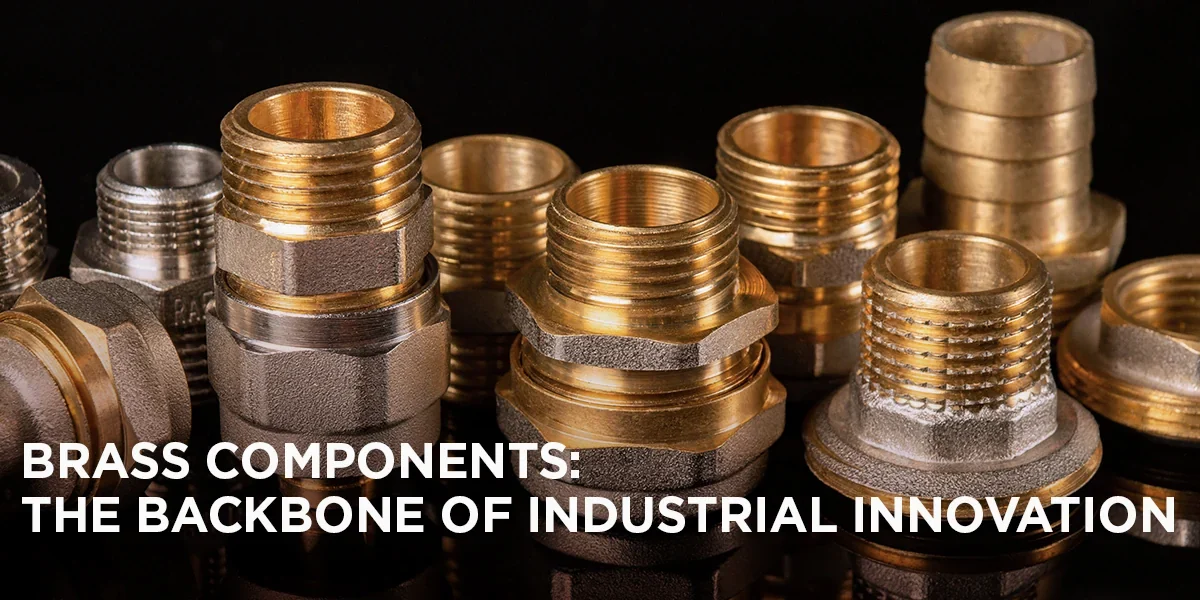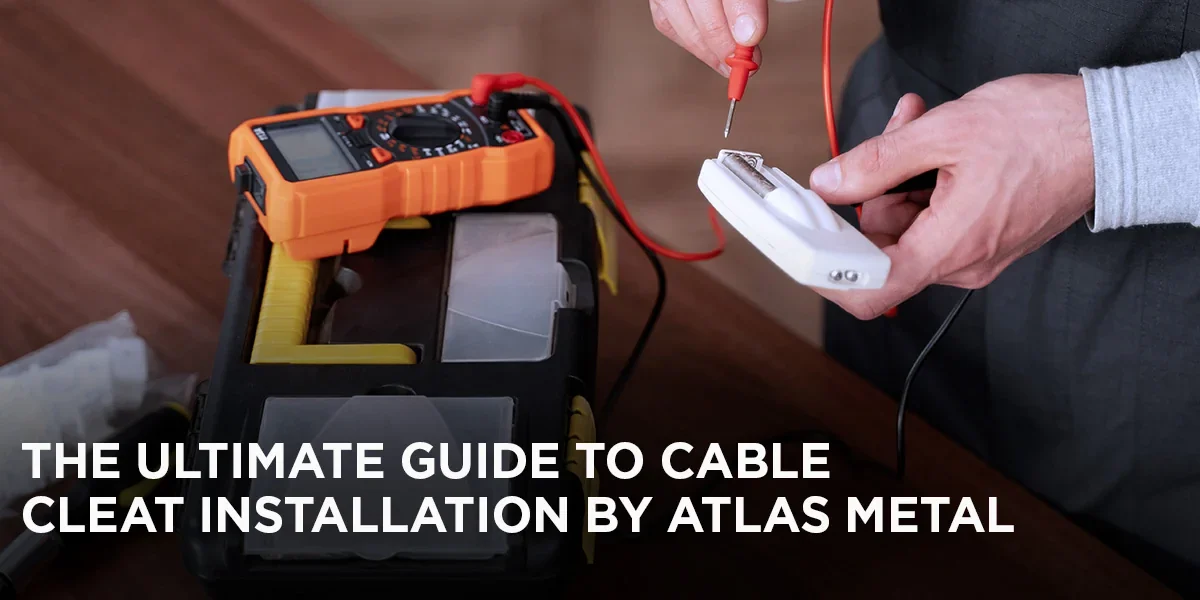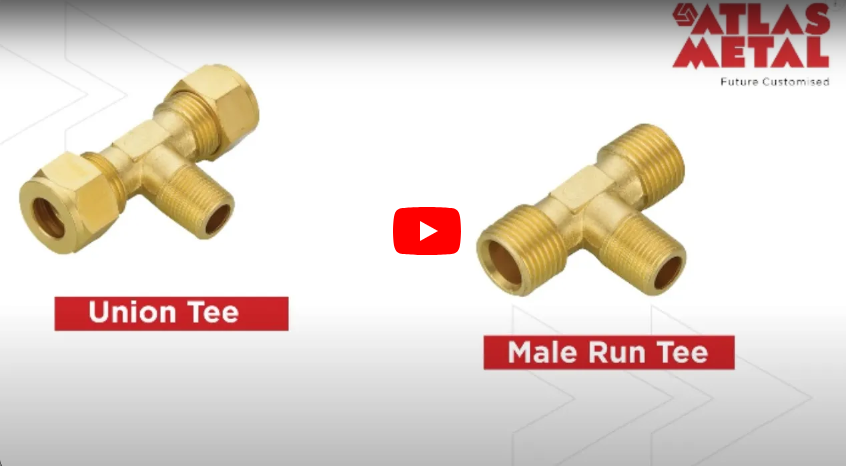Cable glands are crucial components in electrical installations, providing secure and reliable cable entries into equipment. Among the various types of cable glands, double compression cable glands are notable for their superior protection and performance features. Unlike single compression glands, double compression cable glands offer dual compression, enhancing both mechanical strength and environmental sealing. This blog, presented by Atlas Metal, a leader in manufacturing quality brass pipe fittings, delves into the specifics of double compression cable glands, comparing them with single compression types, and exploring their applications.
A double compression cable gland is an advanced device designed to secure and seal cables entering into electrical equipment or enclosures. Unlike single compression glands, which compress the cable at just one end, double compression cable glands apply compression at both the entry and exit points. This dual compression enhances the gland’s ability to withstand mechanical stresses and environmental conditions, making it ideal for more demanding applications.
Typically crafted from durable materials such as brass, double compression cable glands provide excellent resistance to corrosion and mechanical damage. This makes them suitable for use in various environments, from industrial settings to outdoor applications.
The functionality of a double compression cable gland involves two stages of compression. Initially, when installed, the outer compression ring compresses the outer sheath of the cable against the gland body. This creates a seal that prevents dust, moisture, and other contaminants from entering the equipment.
The second stage of compression occurs inside the gland, where the inner compression ring compresses the inner insulation of the cable. This additional compression secures the cable firmly in place and enhances its resistance to mechanical stress. The combination of these two compression stages ensures a robust sealing mechanism, making double compression cable glands highly effective in protecting cables across various environments.
Double compression cable glands serve multiple purposes in electrical installations, including:
- Protection Against Environmental Factors: They provide superior protection against dust, moisture, and chemicals, making them ideal for use in harsh environments.
- Mechanical Strength: The dual compression mechanism ensures that cables are securely held in place, reducing the risk of mechanical damage.
- Enhanced Safety: By offering a robust seal, double compression cable glands reduce the risk of electrical faults, ensuring the safety of both equipment and personnel.
- Compliance: These glands often adhere to international safety and performance standards, making them suitable for use in regulated industries.
The versatility of double compression cable glands allows them to be used in a range of applications:
- Industrial Machinery: Secures cables in machinery and equipment exposed to harsh conditions.
- Oil and Gas: Provides protection for cables in oil rigs, refineries, and other facilities with high exposure to chemicals and extreme conditions.
- Mining: Ensures secure cable entry in mining equipment, safeguarding against dust and moisture.
- Automotive: Used in vehicles to secure and protect wiring systems from vibrations and environmental factors.
- Building and Construction: Ensures reliable cable connections in construction sites and commercial buildings.
A typical double compression cable gland consists of several key components:
- Gland Body: The main part of the gland housing the cable and providing sealing and compression.
- Outer Compression Ring: Compresses the outer sheath of the cable against the gland body, ensuring protection against dust and moisture.
- Inner Compression Ring: Compresses the inner insulation of the cable, securing it firmly in place.
- Locknut: Secures the gland to the equipment or enclosure, providing stability and preventing loosening.
- Sealing Washer: Ensures a tight seal between the gland and the equipment or enclosure, further enhancing protection.
The primary differences between single compression and double compression glands are:
- Compression Points: Single compression glands compress the cable at one end, while double compression glands provide compression at both ends.
- Sealing Effectiveness: Double compression cable glands offer superior sealing effectiveness due to their dual compression, providing better protection against environmental factors.
- Mechanical Strength: Double compression glands deliver greater mechanical strength, making them suitable for more demanding environments.
- Application Environments: Single compression glands are typically used in less demanding environments, whereas double compression glands are preferred in industrial and harsh settings.
There are several types of cable glands, each designed for specific applications and environments:
- Single Compression Glands: Suitable for less demanding applications requiring basic compression and sealing.
- Double Compression Glands: Ideal for harsh environments, offering enhanced protection and mechanical strength.
- Armoured Cable Glands: Used with armoured cables to provide additional protection and secure the cable armor.
- Unarmoured Cable Glands: Suitable for unarmoured cables, offering basic compression and protection.
- Explosion-Proof Glands: Designed for hazardous environments where there is a risk of explosions.
- Hygienic Glands: Used in industries with high hygiene standards, such as food and pharmaceuticals.
For inquiries, reach us at sales@atlasmetalind.com or call us at +91-288 2730 944. Visit our website at https://atlasmetalind.com to learn more about our products and services
FAQs
What is a single compression cable gland used for?
A single compression cable gland provides basic compression and sealing for cables in less demanding environments.
How many elements are there in a double compression cable gland?
A double compression cable gland typically includes a gland body, outer compression ring, inner compression ring, locknut, and sealing washer.
What is a double compressor gland?
A double compressor gland, or double compression gland, provides compression at both ends of the gland, enhancing sealing and mechanical strength.
What is the difference between single compression and double compression glands?
The key difference is that double compression glands compress the cable at both ends, offering better sealing and mechanical strength compared to single compression glands.
Can we use a double compression gland for unarmoured cable?
Yes, double compression glands can be used for unarmoured cables, providing enhanced sealing and protection.
What is A1 and A2 cable gland?
A1 and A2 refer to different types or standards of cable glands, with A1 typically being a standard type and A2 a variant or specific design.
What are the advantages of using brass cable glands?
Brass cable glands offer durability, corrosion resistance, and excellent mechanical strength, making them ideal for a range of industrial and outdoor applications.







